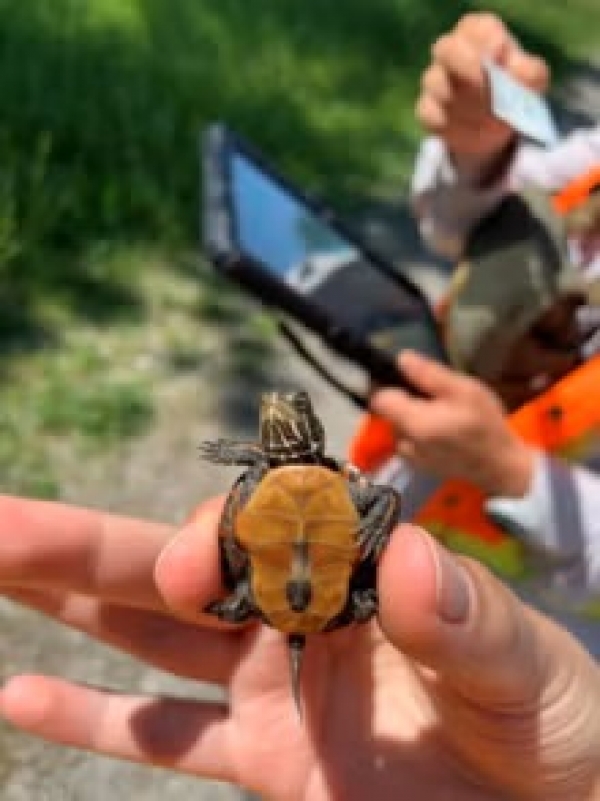Bordering Lake Erie and extending across Norfolk County, Long Point Region hosts many internationally recognized protected natural areas and is a refuge for many species at risk.
Bordering Lake Erie and extending across Norfolk County, Long Point Region hosts many internationally recognized protected natural areas and is a refuge for many species at risk.
The region’s conservation efforts have deep roots, with initiatives dating back to 1866. Today, those efforts are continued through organizations like the non-profit Long Point Biosphere Region Foundation. It’s where Katja Kubasta, a Faculty of Environment student, found a meaningful donor funded work opportunity through the KEEN Global Citizen Internship.
Kubasta grew up with a passion for the environment and a love for the outdoors. “I went camping a lot as a kid,” she says. “My parents always kept sustainability top of mind at our house. That’s been a really big influence and why I decided to join my program. Also, in high school, there was the ecology and evolution unit, and I just wanted to learn more.”
Read More: University of Waterloo
Kubasta conducted a total of 586 standardized surveys using an application called FieldMaps, part of the ESRI ArcGIS program. During these surveys, she recorded 216 wildlife observations of which 89% were dead on the road and only 11% were alive. (Photo Credit: University of Waterloo)




